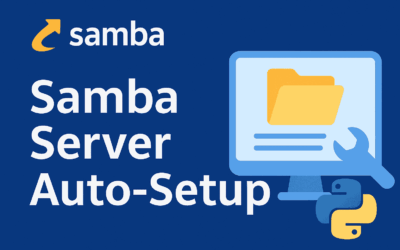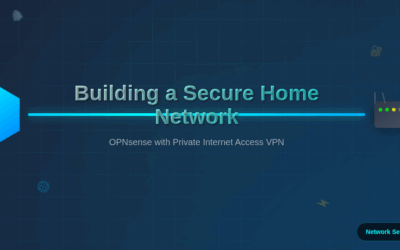🧩 Introduction
In today’s increasingly complex network environments, efficiency, security, and scalability are more than just buzzwords—they’re fundamental design requirements. One of the foundational technologies that helps achieve all three is the Virtual Local Area Network, or VLAN. Despite being introduced decades ago, VLANs remain a cornerstone of network design across enterprise, campus, and even cloud environments.
This post offers a vendor-neutral look into what VLANs are, why they matter, and how they fit into global networking standards.
🔍 What is a VLAN?
A VLAN (Virtual Local Area Network) is a logical segmentation of a physical network. Instead of relying on physical separation (such as using different switches or routers for each department), VLANs allow administrators to create isolated broadcast domains within a single physical switch or network infrastructure.
Think of a VLAN as a virtual switch inside a physical switch. Devices assigned to the same VLAN behave as if they were on the same physical LAN, even if they’re physically located across different floors or buildings—as long as the underlying infrastructure supports VLAN tagging.
🧠 The Need for VLANs
Originally, Ethernet networks were flat and broadcast-heavy. Every device would receive every broadcast, regardless of whether it was relevant. This caused issues like:
- Broadcast storms
- Security vulnerabilities
- Performance bottlenecks
VLANs solve these issues by:
- Reducing broadcast domains
- Enhancing traffic isolation
- Improving administrative control
For example, separating HR and Engineering traffic into different VLANs ensures HR devices don’t receive unnecessary data from Engineering, and vice versa.
🏛️ Who Owns VLAN?
VLANs are not the product of any single vendor. While early implementations were pioneered by major networking companies like Cisco, the concept was standardized to ensure interoperability.
Today, VLANs are a universal feature supported by virtually every enterprise-grade switch, regardless of brand—be it Cisco, Juniper, Arista, HP, or others. This broad support is largely thanks to open standards maintained by the IEEE (Institute of Electrical and Electronics Engineers).
📜 VLAN and the IEEE Standards
The most important standard associated with VLANs is IEEE 802.1Q, published in 1998. This standard defines how Ethernet frames are tagged with VLAN information as they traverse trunk links.
Key concepts from IEEE 802.1Q:
- Adds a 4-byte VLAN tag into Ethernet frames
- Allows for up to 4094 VLANs (IDs 1–4094; 0 and 4095 are reserved)
- Supports tagged and untagged traffic on the same link using the concept of native VLAN
Other related standards:
- IEEE 802.1D: Defines bridging and Spanning Tree Protocol (STP), often used alongside VLANs to prevent loops
- IEEE 802.1Q-in-Q: Enables VLAN stacking (used in service provider environments)
🧩 Types of VLANs
Without diving into vendor-specific terms, here are general VLAN categories used in real-world deployments:
- Default VLAN: The VLAN all switch ports belong to by default (commonly VLAN 1)
- Data VLAN: Carries normal user traffic
- Voice VLAN: Segregates and prioritizes VoIP traffic
- Management VLAN: Dedicated for remote management and monitoring
- Native VLAN: Handles untagged traffic on trunk links (per 802.1Q)
These categories help in maintaining organizational clarity, performance tuning, and security segmentation.
🛠️ How VLANs Work
When traffic from different VLANs traverses the same physical link—say between switches—a mechanism is needed to distinguish between them. This is where VLAN tagging comes in:
- Switches insert a tag into the Ethernet frame as defined by 802.1Q
- Tags contain the VLAN ID (VID) indicating the origin VLAN
- On the receiving end, switches read the tag and forward traffic accordingly
This allows one physical connection (a trunk port) to carry multiple VLANs, maintaining logical separation throughout the path.

🌐 VLAN Use Cases in Real Networks
VLANs are employed in nearly every enterprise environment for scenarios like:
- 🔒 Security: Isolating sensitive departments like HR or Finance from general users
- 🎤 Voice Networks: Separating voice traffic to prioritize QoS for IP phones
- 🧳 Guest Access: Keeping guest users on a separate VLAN with limited access
- 🏢 Multi-Tenant: In shared datacenter environments, VLANs isolate tenant networks
- 🌐 Cloud & Virtualization: VLANs still play a role in hybrid environments, even as VXLAN and overlay networks gain traction
🔐 Security Considerations
While VLANs offer segmentation, they should not be considered complete security solutions on their own.
- VLAN Hopping is a known attack where malicious actors try to access traffic from other VLANs
- Proper configuration and access control mechanisms must accompany VLANs
- Combining VLANs with firewalls, ACLs, and network monitoring strengthens overall security
🧭 Final Thoughts
VLANs may not be flashy, but they are indispensable in designing organized, secure, and scalable networks. Whether you’re an aspiring network engineer or a seasoned IT architect, understanding VLANs is a crucial part of the toolkit.
As networks evolve into software-defined architectures and cloud environments, VLANs continue to play a supporting role—bridging traditional designs with modern networking needs.




